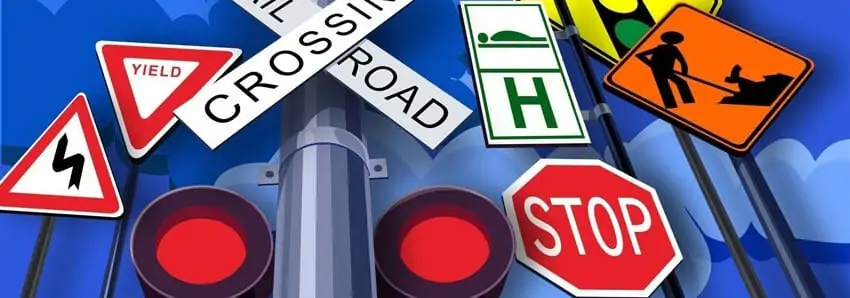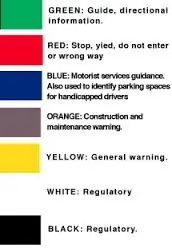History of Traffic Signs
Have you ever wondered why handicapped parking places are always marked with blue placards or blue paint? And why do construction sites always have warning signs and pylons in orange? As early as 1899, owners of “horseless carriages” met to form an automobile club. The main topic of conversation was “We need traffic signs.” As many as 11 directional signs were sometimes found at one intersection and the group hoped to establish guidelines to minimize the confusion.
Following the conference, traffic signs were still erected haphazardly with no real plan or design. In the 1920s, efforts to standardize signs by color began. Originally, the color red for stop signs was rejected as being too difficult to see at night. Pursuant to a survey and recommendations of users of both urban and rural roads, it was finally agreed that the stop sign would have red letters on a yellow background.
In 1935, a Manual on Uniform Traffic Control Devices (MUTCD) was issued in order to standardize signs nationwide. Through the years, the manual has been updated, supplemented and amended several times. Following WW II, major changes were made, including changing the stop sign to white letters on a red background. The goal was to be sure that traffic signs in Colorado were the same as traffic signs in other states.
Traffic Signs are Color-coded for Continuity
Companies that sell traffic signs know that today there are seven colors that are used for broad categories to cover the need for signs ranging from those that guide travelers to their destinations to those that warn of dangers. Traffic sign companies comply with these standardized colors for each category of sign they produce.
- Red: Tells motorists to stop and remain stopped until it is safe to proceed.
- Green: Acts as a guide. It gives highway directions and tells how far it is from one place to another.
- Yellow: Gives a general warning such as, “Slow. Children at play” or “Slow. School zone” or “Deer Crossing.” Railroad crossings are marked with yellow signs. The color acts as an advisory of road conditions that are coming up.
- Black and white: Warns drivers of enforceable regulations and laws. “One Way Street” and “Dead End Road” are two examples.
- Blue: Informs motorists of available services such as restaurants, hospitals, hotel, gasoline, rest areas, campgrounds and picnic areas. Handicapped parking spaces fall into this category because they provide a service.
- Orange: Is the color for construction signs that alert drivers to upcoming road construction or maintenance.
- Brown: Directs drivers to areas of historical or cultural significance, including scenic sites or national parks.
Whatever type of traffic sign you may need, Connecting Signs is here for you. We understand more than the standard rules of color and shape. We understand size and placement so the information can be read and understood easily. Give us call at: 970-493-0133 and stay safe out there!


